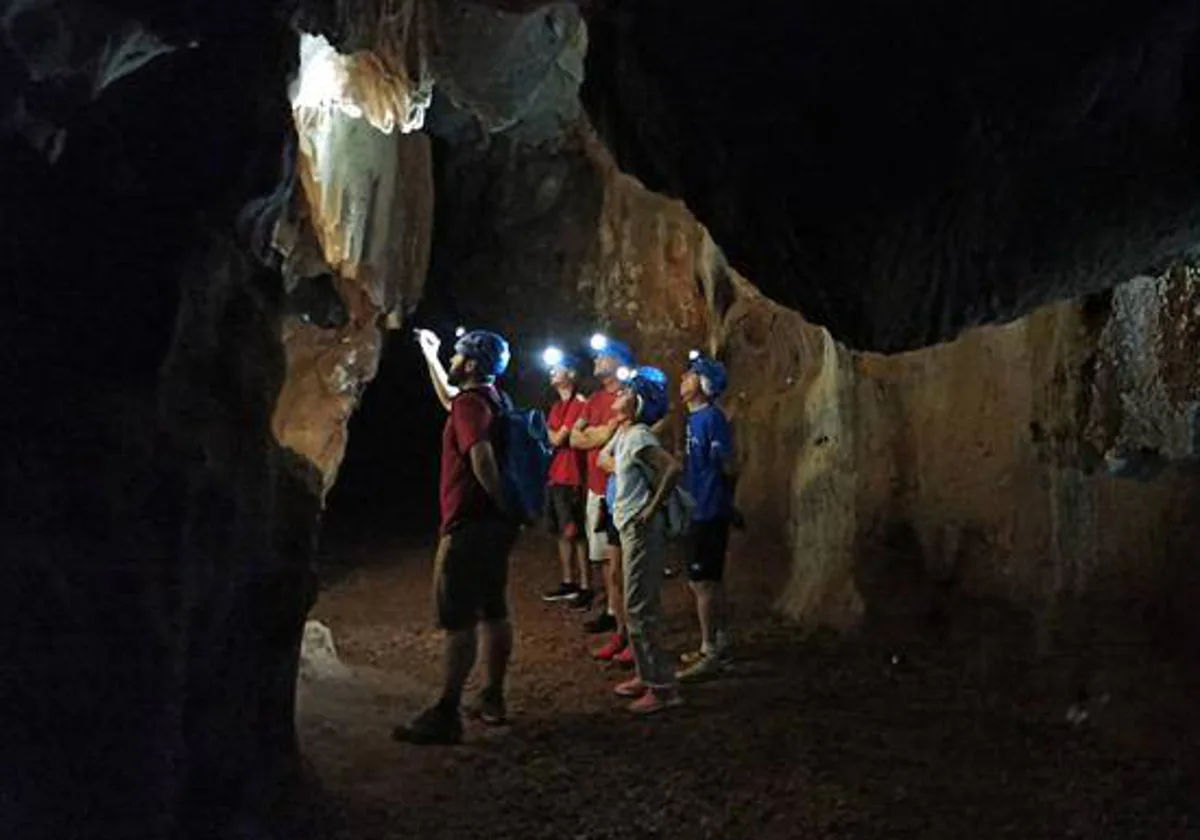Axarquía cave to be included in the European Prehistoric Rock Art Trails
HERITAGE ·
The Cueva de la Victoria in Rincón de la Victoria opened a year ago and the town hall and researchers are working towards it becoming a Unesco candidateSUR
Miércoles, 1 de marzo 2023, 12:28
The Cueva de la Victoria in Rincón de la Victoria has been included in the European Prehistoric Rock Art Trails itinerary. The inclusion on this list is the step for the cave to become a candidate for Unesco World Heritage status.
The announcement came on Saturday 25 February and coincided with the first anniversary of the cave's opening and was made by mayor of Rincón de la Victoria, Francisco Salado.
The Cueva de La Victoria shows 30,000 years of Archaic Paleolithic art, Magdalenian Paleolithic art, Neolithic burials or the youngest Schematic art, with 6,500 and 4,500 years of history.
The Cueva de la Victoria was also a Neolithic burial cave. About 13,000 years ago, the silhouettes of several individuals were carved into one of its galleries. Each of them is positioned in a different way in front of the other. Most of the human figures are based on a simple outline representing the trunk and upper limbs.
Research projects
The cave's research team, coordinated by Pedro Cantalejo, María del Mar Espejo, Luis-Efrén Fernández, José Ramos, Cristina Liñán and Yolanda Del Rosal, has developed an archaeological project to monitor the interior of the caves to check and control its climatology and to make sure it remains stable in the rooms where the cave paintings are preserved.
The team has also developed a project to date and characterise the prehistoric art, which has led to the inclusion of the Rincón de la Victoria caves in the international project FIRST ART, which is demonstrating the existence of art prior to the existence of Homo sapiens.
It is this research, along with new lighting and cleaning project, have led to the inclusion in the European Prehistoric Rock Art Trails cultural itinerary, a step prior to becoming part of a group of Paleolithic caves that are candidates for Unesco World Heritage status.
According to the coordinator of the research group, Pedro Cantalejo, this recognition «is very important, because the Council of Europe will classify the Cueva de La Victoria as a cultural product within the field of scientific tourism, controlling its conservation parameters and making them compatible with economic sustainability».
Cantalejo went on to explain that to achieve this goal, «The site will have to continue to advance in its environmental controls, its research, conservation and dissemination project in accordance with the standards of the 21st century».
Visitors
Salado explained that the Cueva de La Victoria received a total of 1,462 visits since it opened on 25 February 2022. Some 93.5 per cent of the visits registered at the Cueva de la Victoria in the first year were Spanish citizens and the rest foreigners.
Just under 20 per cent of the Spanish visitors were residents of Rincón de la Victoria and a further 20 per cent from Malaga city. From the rest of the province the percentage was nearly five per cent. 13.5 per cent came from Madrid and 34 per cent came from other parts of Spain.
Visitor numbers are limited to groups of a maximum of 10 people at three different times (10am, 12.30pm and 4pm) on just three days a week: Fridays, Saturdays and Sundays. Starting in March the number of days open to the public will be extended in order to encourage more people to visit the cave.
Tickets to visit the Cueva de La Victoria can be made online at: www.turismoenrincon.es. Admission is €16.50 general admission (over 12s and under 70); for groups of ten people: €13.75 euros each and children €13.75.
